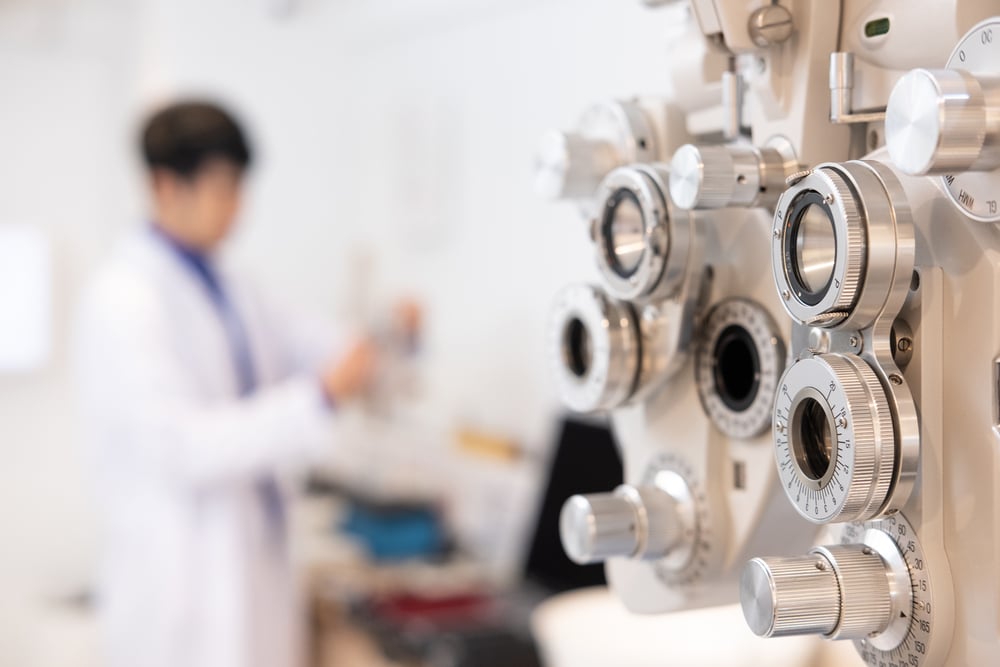
When you go to your eye doctor for an annual eye exam, they will check your vision and evaluate the health of your eyes. During this appointment, your eye doctor will perform various tests to check everything from the quality of your vision to whether or not you might be developing cataracts.
One of the most common diagnostic tools used during an eye exam is the refraction test, also known as a vision test. But, what exactly is a refraction test, and what does it measure?
Keep reading to learn more about refractions during an annual eye exam!
What Is a Refraction Test?
A refraction test is an eye examination that determines the ideal correction for refractive errors, such as nearsightedness, farsightedness, or astigmatism. During the test, your eye doctor uses a device called a phoropter, which contains different lenses, to measure how your eyes focus light.
You’ll be asked to look through the phoropter and identify which lens combination provides the clearest vision. The results of the refraction test are used to create a prescription for glasses or contact lenses that will help you achieve optimal vision clarity.
Regular refraction tests are essential for maintaining good eye health.
What Exactly Are Refractive Errors?
The various parts of your eye work as a team to process what you see and send these images back to your brain. The process goes like this:
- First, light goes through the cornea, which is the clear part at the front of the eye.
- The cornea then focuses the light through the eye lens.
- The lens then helps focus the light on the back of your eye where your retina is.
- Next, the retina turns light into electrical signals that the optic nerve sends to the brain.
- Finally, once these signals reach your brain, your brain creates the images you’re seeing in front of you.
In order for you to have clear vision, every step in this process must work efficiently to help light land on the back of the eye. If your eye is too short or too long or if your cornea is too steep or too flat, the light won’t land directly on the retina.
This is called a refractive error.
What Are the Different Kinds of Refractive Errors?
The most common refractive errors are:
Farsightedness (Hyperopia)
With hyperopia, it’s difficult to see items that are close up. You can see things at a distance clearly but will need glasses or contacts for things like reading or typing.
Nearsightedness (Myopia)
Myopia is the opposite of hyperopia. With myopia, you can see things close up clearly, but things farther away will be blurry.
Astigmatism
With astigmatism, you have generally blurry vision. Astigmatism can be caused by the shape of your cornea or lens.
Age-related Farsightedness (Presbyopia)
This kind of farsightedness usually occurs in individuals older than forty. While the impacts to vision are the same as hyperopia, the underlying cause is an eye lens that gets less flexible with age.
What Happens During A Refraction Test?
During your eye exam, you’ll sit in a chair with a device called a phoropter or refractor in front of you. You will look through this device and focus on an eye chart that’s twenty feet away.
Your eye doctor will then have the device use various lenses on one eye at a time. The eye doctor will ask how the letters look through each lens, such as whether the chart looks clear or blurry.
If you have a refractive error, you’ll receive a prescription for lenses to help you see clearly.
Is it time for you to have a refraction or get your eyes checked? Schedule an appointment at Stahl Eyecare Experts in Garden City, NY, today!







